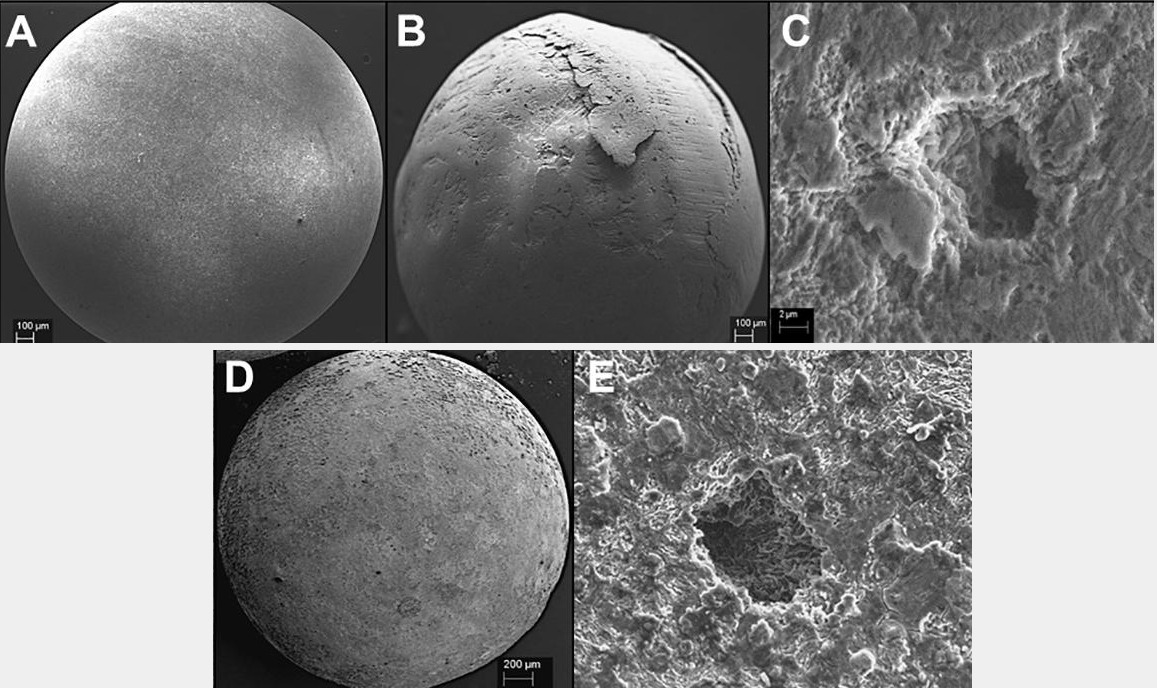
Microbiologically induced corrosion of carbon steel beads (B-E) compared to control beads without corrosion (A).
Source: BAM Division Biodeterioration and Reference Organisms
Microbiologically influenced corrosion (MIC) of metallic components is an often underestimated phenomenon. It is assumed that at least 20% of all damages cases e.g. to pipelines, storage tanks, and parts of on- and offshore wind turbines are due to microbiological processes. One group of microorganisms is considered the main cause: sulfate-reducing bacteria that produce hydrogen sulfide, a foul-smelling, highly toxic and corrosive gas. Further classes of microorganisms are also corrosive, among them methanogenic archaebacteria that produce methane, a neutral, non-corrosive gas. It is assumed that in this case metal corrosion is directly associated with methanogenesis. There is little knowledge on the mechanism, which is believed to be due to the test methods employed so far. The test procedure developed at BAM is based on a multi-port flow column and allows investigating MIC systematically under variation of different parameters such as type of metal and microorganism as well as salinity, flow rate and pH value amongst others. In this way, a novel insight into corrosion induced by methanogens under dynamic conditions was achieved and opens new options for monitoring and for the development of mitigation strategies.
Iron to Gas: Versatile Multiport Flow-Column Revealed Extremely High Corrosion Potential by Methanogen-Induced Microbiologically Influenced Corrosion (Mi-MIC)
Biwen Annie An, Sherin Kleinbub, Özlem Özcan, Andrea Koerdt
published in Bioleaching and Biocorrosion: Advances in Interfacial Processes Vol. 78, article 527
BAM Division Biodeterioration and Reference Organisms,
Division Interfacial Processes and Corrosion


